Introduction
In an increasingly digital world, understanding the differences between a website and a web application is essential for businesses and individuals looking to establish a robust online presence. While both serve to connect users with information and services, their functionalities and purposes vary significantly. Websites primarily deliver static content and are designed for users to navigate through information, making them ideal for businesses wanting to showcase products, services, or corporate information.
On the other hand, web applications are dynamic, highly interactive platforms that allow users to perform specific tasks such as online banking, e-commerce transactions, or project management. This article delves into the definitions, key differences, use cases, and considerations for choosing between a website and a web application, providing a comprehensive guide to help you make an informed decision tailored to your specific needs and objectives.
What is a Website?
An online platform is a collection of interconnected web pages hosted on a server and accessible via the internet. Websites usually provide static content, such as business information, articles, or media, designed primarily for display. Users explore online platforms using hyperlinks, engaging primarily by viewing and reading the provided information. For example, the National Park Service online platform (NPS.gov) attracts half a billion visitors each year, employing the Digital Analytics Program (DAP) to comprehend visitor behavior, monitor trends, and adjust to rising mobile traffic. This emphasis on unchanging material and accessibility is essential, particularly as 61% of visitors will exit a site if they don’t locate what they seek within five seconds. Contemporary online platforms must also be mobile-friendly, as 55.5% of all web traffic now comes from mobile phones, highlighting the necessity for responsive design to meet user expectations effectively. Seventy percent of small business online platforms lack a call to action, impacting their ability to convert visitors into customers, underscoring the importance of clear and engaging content.
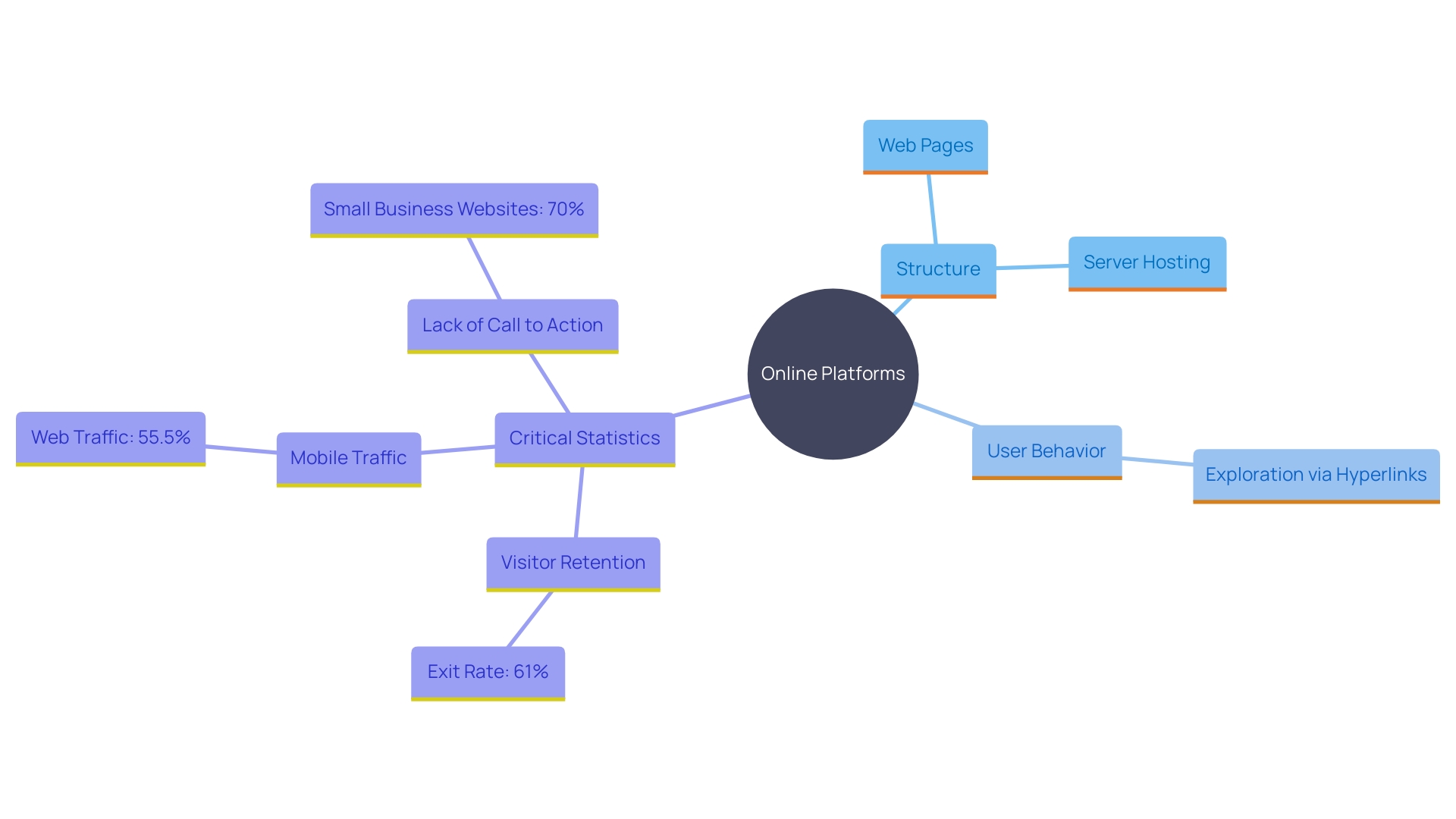
What is a Web Application?
A web software is a program that operates on a web server and is accessible through a web browser. Unlike conventional websites, which are frequently fixed and solely informative, web tools are dynamic and intended for interaction. They enable individuals to perform specific tasks such as submitting forms, managing data, or engaging with real-time features. For instance, services like online banking systems, e-commerce platforms, and social media sites offer a more interactive experience, incorporating complex functionality that resembles desktop software. This flexibility and practicality are major factors why web solutions are widely utilized across different sectors, from automotive to e-commerce, boosting engagement and operational efficiency.
Key Differences Between Web Apps and Websites
The main difference between web programs and websites lies in their functionality and purpose. Websites are typically informational, concentrating on content delivery, while web programs are interactive, enabling users to interact with features and carry out tasks. For instance, web platforms facilitate remote work, online education, electronic banking, and e-commerce, providing a broad range of services across industries. These programs are hosted remotely on servers and accessed via the Internet, utilizing the HTTP/HTTPS protocol for communication between the server and client.
'Online platforms often necessitate individual verification, information handling, and immediate updates, features not usually linked with conventional websites.'. Authentication confirms individual identity, while authorization guarantees individuals have access to particular programs, files, and information. This enhances security and user experience. Moreover, the technology stack for online platforms includes advanced programming languages and frameworks, containerization, orchestration, and cloud deployment. Maintenance involves DevOps practices, continuous integration, and delivery (CI/CD).
The methodology for developing web applications, such as Agile, Scrum, or Kanban, depends on project size, team size, and application requirements. Progressive web apps (PWAs), which offer offline functionality and the speed of native mobile apps, are becoming increasingly popular. As the industry evolves, mobile-first development and the incorporation of AI tools are emerging trends, driven by the need for optimized performance and overall experience.
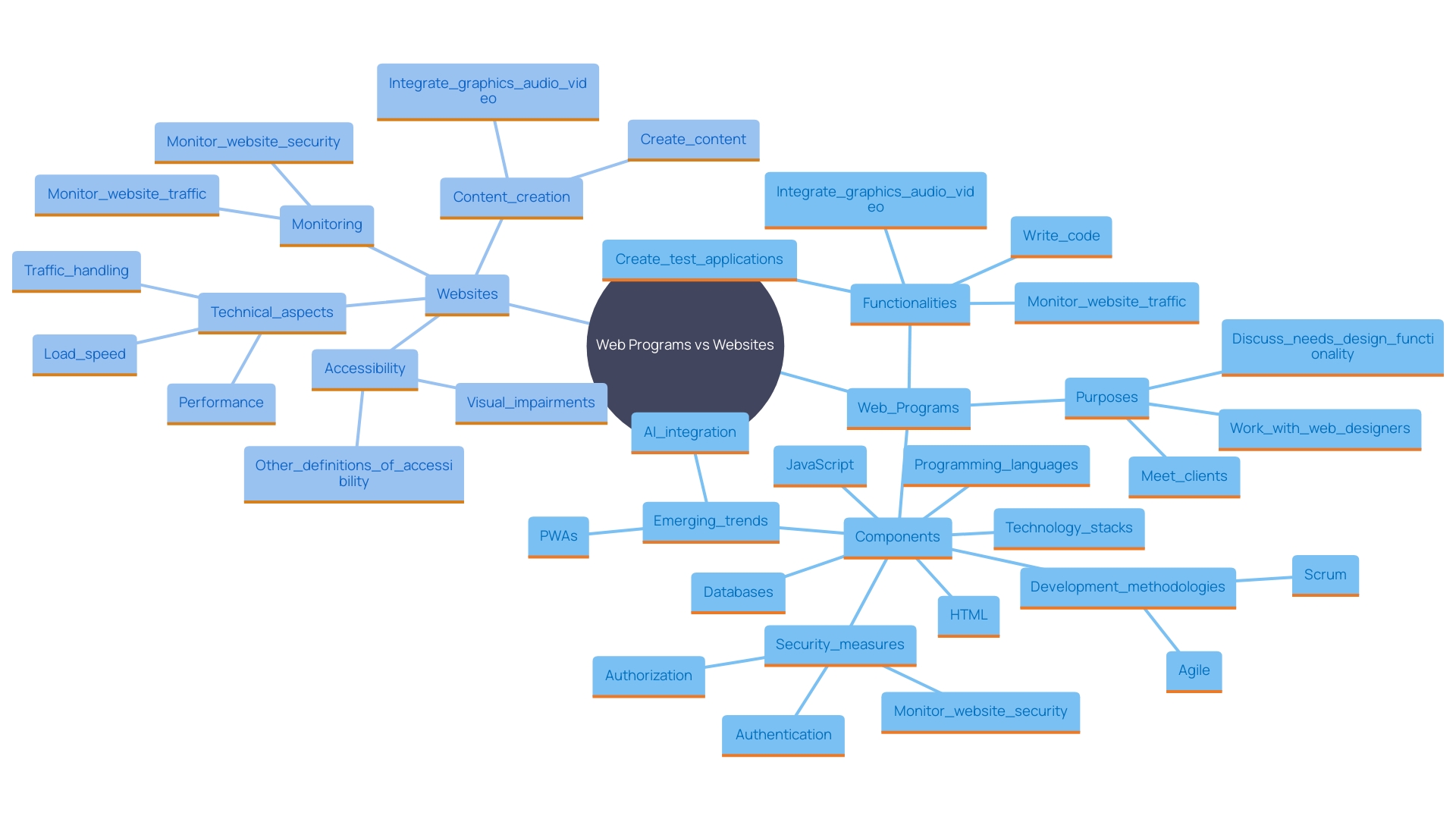
Use Cases for Websites
Websites are essential for businesses and individuals aiming to establish a solid online presence, provide valuable information, or showcase their products and services. They act as virtual spaces that enhance engagement between individuals and the brand. Common use cases include blogs, portfolios, landing pages, and informational sites, acting as digital brochures that not only inform but engage users.
For small businesses, establishing an online presence is a crucial step that often leads to underestimating or overestimating its role in the industry. 'The average expense of an online platform for a small enterprise varies between $1,000 and $10,000, indicating the increasing acknowledgment of the significance of a digital presence.'. These platforms should be hosted on web servers, always online, to ensure global accessibility.
Websites today are the cornerstone for modern enterprises, acting as the first point of contact with potential customers. They are a reflection of the company's identity and a critical source of information about the brand, mission, and offerings. As competition and consumer expectations evolve, a well-designed website becomes a necessity, not a luxury.
Incorporating essential features like booking, e-commerce, and chat functionalities can convert visitors into loyal customers. Ensuring a seamless experience for individuals, whether on desktop or mobile, is vital. The experience should be welcoming and fast, just like walking into a well-maintained shop. By refining your web presence and aligning it with your business values, you can significantly enhance customer engagement and satisfaction.
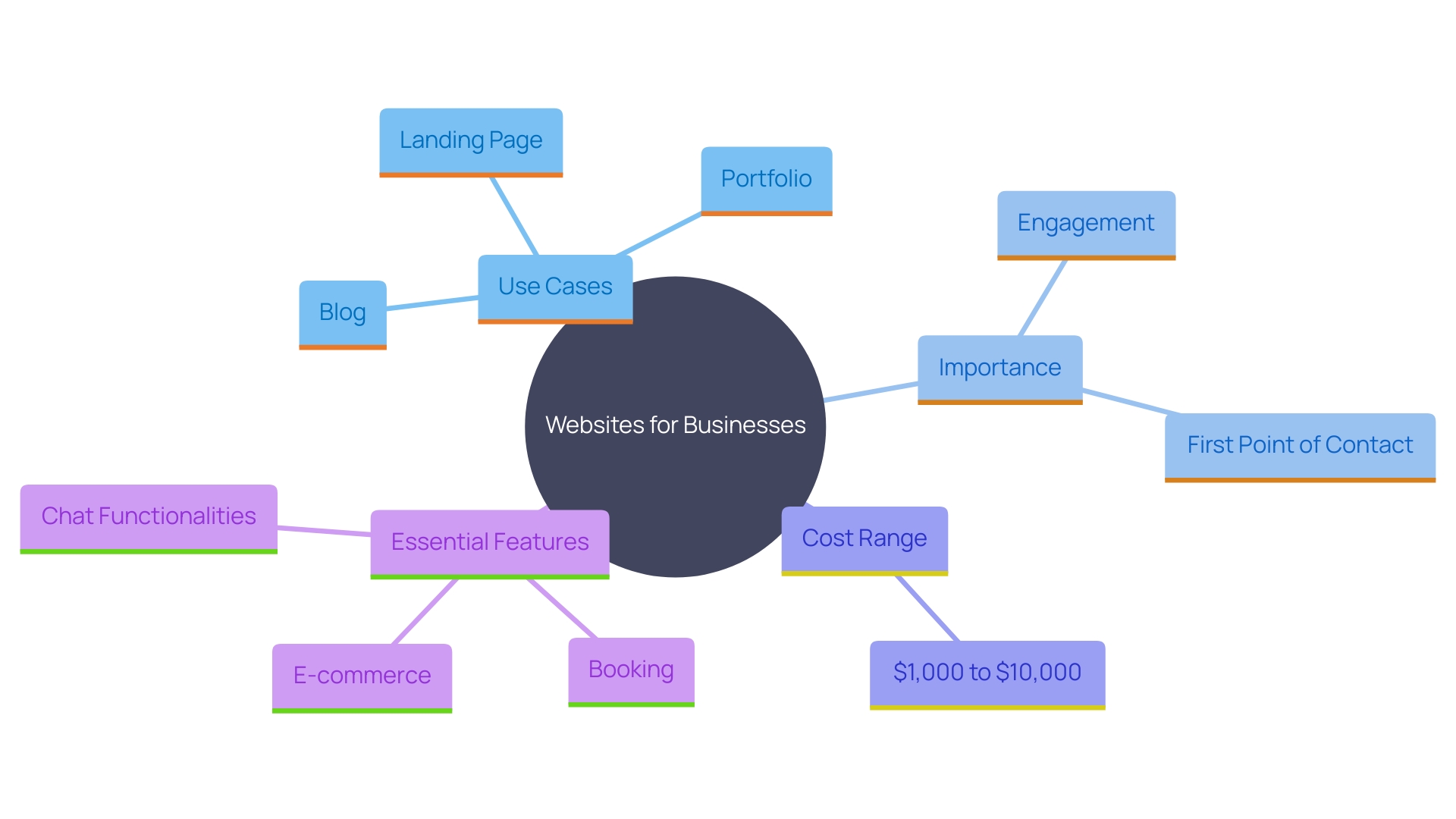
Use Cases for Web Applications
Online platforms thrive in settings demanding participant engagement and sophisticated features. This includes e-commerce platforms, online banking systems, project management tools, and social media sites. These tools enable individuals to perform specific tasks, manage data, and collaborate in real-time, fostering user engagement and interactivity.
For instance, Ripley, a major retailer in Chile and Peru, faced low mobile conversion rates despite a well-adapted website. This prompted the creation of a mobile tool to provide a seamless shopping experience, responding to customer preferences for self-service and mobile transactions. Such initiatives are crucial for businesses to capture crucial opportunities and optimize resource use.
Web-based programs are frequently created using approaches such as Agile or Scrum, customized to the scale and needs of the project. These methodologies prioritize development speed, efficiency, and high-quality user experiences. By deploying, maintaining, and continuously integrating updates, businesses ensure their software remains robust and user-friendly.
In the financial sector, CGI's renewed partnership with the National Bank of Canada exemplifies the significance of advanced web solutions in enhancing client experiences and operational excellence. AI integration, voice user interfaces, and enhanced security features are increasingly incorporated to meet evolving user needs and protect data.
The shift towards mobile-first strategies and the integration of AI highlight the dynamic nature of web applications and their critical role in modern business operations.
Choosing Between a Web App and a Website
When determining whether to create a web application or an online platform, it's essential to align your selection with your main goals. For a straightforward digital presence or to disseminate information, a website is often sufficient. Websites can range from simple informational pages to more intricate designs, typically costing between $1,000 and $10,000 for small businesses. Nonetheless, if your needs involve audience engagement, intricate tasks, or sophisticated functionalities, a web platform is more appropriate.
Online platforms are created for enhanced interactions and engagement, frequently necessitating a larger commitment. The cost and time for developing such applications can vary greatly, depending on the complexity and features required. For example, building a robust Content Management System (CMS) can take between three to eight weeks and cost from $3,000 to $9,000.
Consider the future trends in web development, such as mobile-first design and low-code/no-code platforms, which can influence your decision. These trends aim to optimize performance, scalability, and user experience. As Hardy Desai, CEO of Supple Digital, notes, “Opting for a low-code or no-code website design approach will allow you to save time and resources that are best used for other important design trends and elements.”
Additionally, assessing your audience's needs, the complexity of tasks, and your budget will help you make an informed decision. For instance, a case study from 2023 showed that redesigning an online platform, integrating SEO, and using an efficient technical stack increased conversion rates by ten times and boosted qualified traffic significantly. This highlights the importance of tailoring your digital solution to meet specific needs and optimize performance.
Ultimately, whether you choose a web app or a website, the decision should be guided by your business objectives, audience needs, and available resources.
Functionality and Interactivity Considerations
Web platforms are created to provide extensive interactivity, allowing individuals to interact with various dynamic elements like forms, databases, and real-time updates. These programs generally include features such as identity verification, data handling, and flexible design, rendering them versatile and adaptable across various devices. Responsive design is especially vital, ensuring that the layout and content of the software adapt smoothly to various screen sizes and orientations, offering a seamless user experience no matter the device utilized.
Web systems follow a server-client model, relying on the HTTP/HTTPS protocol for communication between the server and the client. This structure enables web platforms to be accessed remotely over the Internet, making them suitable for a wide array of services, including e-commerce, online banking, remote work, and online education. The ability to host these applications on a server and make them accessible to clients worldwide underpins their commercial viability across various industries.
Conversely, online platforms are primarily focused on delivering static content with minimal interaction, using static pages and hyperlinks to present information. While they may incorporate some interactive elements, the core purpose of websites is to inform rather than engage. This distinction is vital when considering audience expectations and the desired level of engagement. For instance, a news website may emphasize content distribution with limited interaction, while an online banking system would need strong, engaging web functionality to carry out transactions safely.
When choosing between an online platform and a web page, it's crucial to match your selection with user expectations and the kind of interaction you intend to accomplish. Web platforms offer a dynamic, interactive experience suitable for complex tasks and services, while websites provide straightforward information dissemination with minimal interaction.
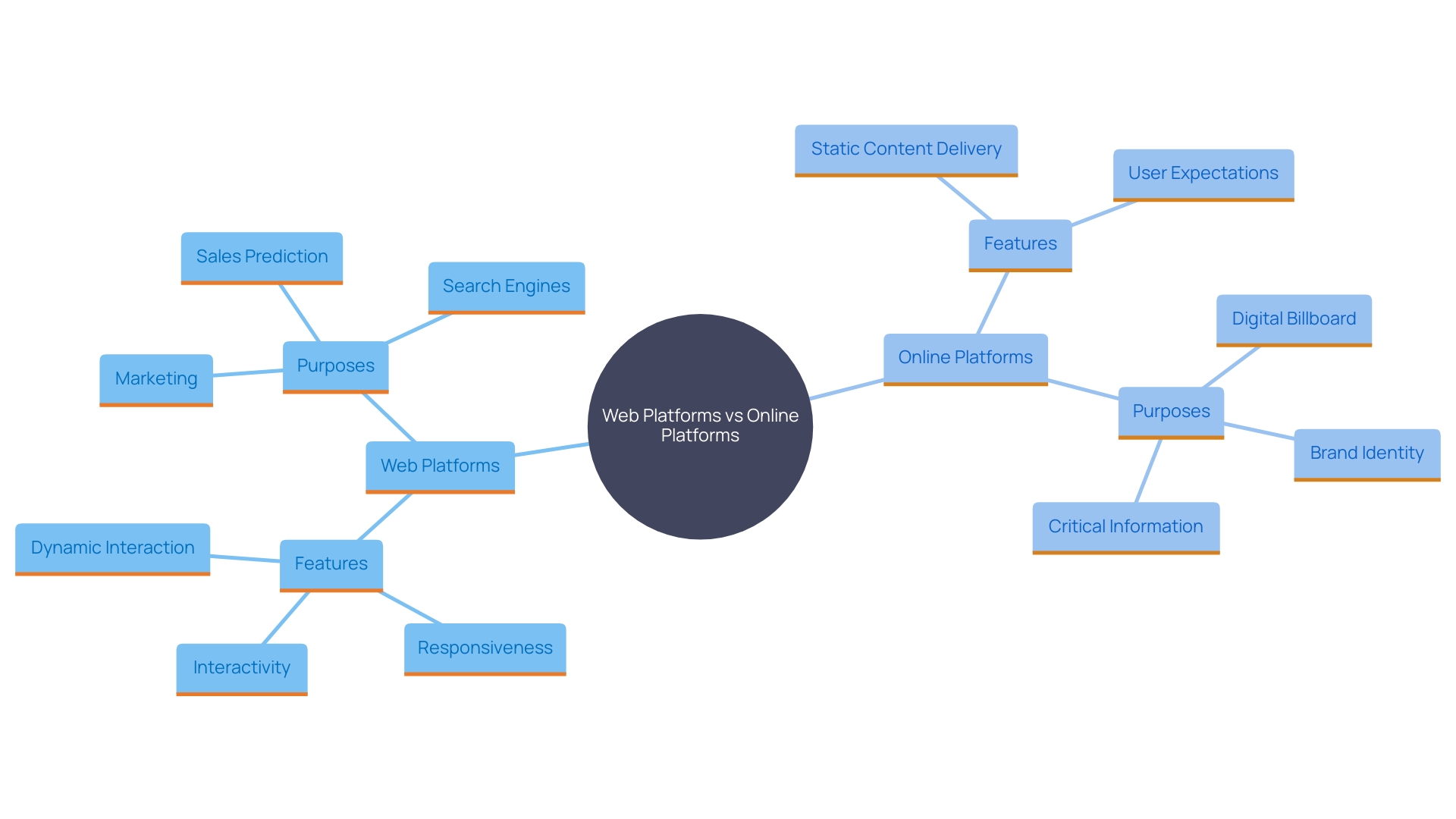
Resources and Scalability Considerations
'Web programs require a substantial commitment of resources for both development and upkeep because of their complex back-end systems, databases, and the necessity for continuous updates.'. For instance, businesses frequently encounter the difficulty of handling an increasing number of simultaneous participants. If their systems aren't prepared, this can lead to significant disruptions. Consider an e-commerce platform unprepared for Black Friday; the surge in simultaneous access could render the platform unavailable, causing substantial losses.
Scalability is a critical aspect of web applications, requiring the ability to handle increased user load and data processing demands. This involves both vertical scalability, such as adding more RAM to existing servers, and horizontal scalability, which includes adding more servers to distribute the workload. A well-planned architecture, like using Django for handling up to 100,000 daily visits, is essential for maintaining performance and stability.
In contrast, online platforms are generally simpler to manage and scale. 'Content updates and traffic management are more straightforward, making online platforms a more viable option for smaller businesses or projects.'. Unlike web applications, websites do not require the same level of resource allocation for scalability, thus providing a more accessible entry point for enterprises looking to establish an online presence.
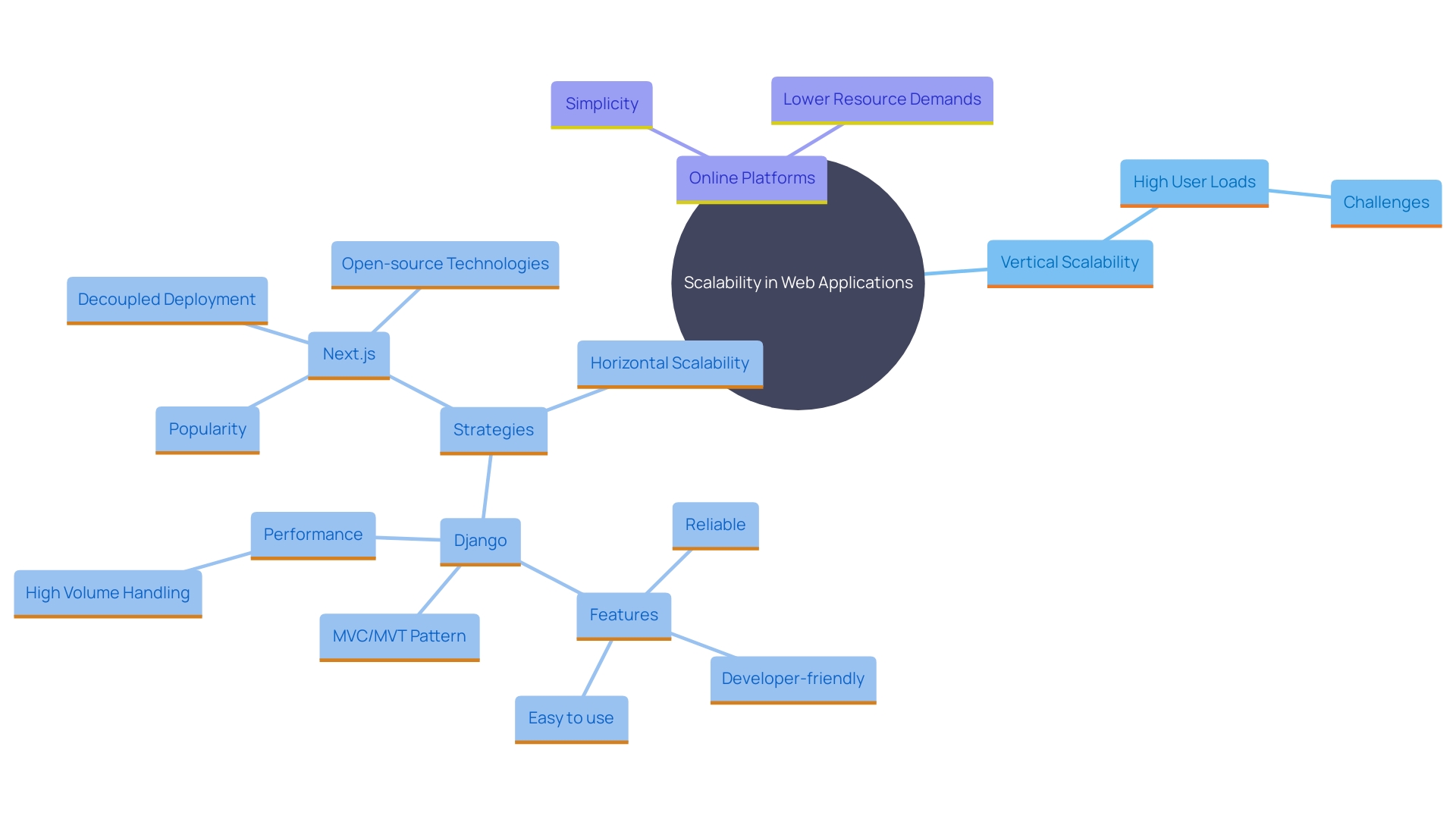
Conclusion
Understanding the distinctions between websites and web applications is paramount for businesses and individuals aiming to develop a successful online presence. Websites serve primarily as platforms for delivering static content and information, making them ideal for showcasing products, services, and corporate information. Their role as digital brochures, combined with the necessity for user-friendly design and mobile responsiveness, underscores their importance in the modern digital landscape.
Conversely, web applications offer dynamic and interactive features that facilitate user engagement and complex functionalities. Designed for tasks such as online banking, e-commerce, and real-time collaboration, they cater to a different set of user needs. The investment in web applications often reflects their complexity and the advanced technologies involved, highlighting the importance of aligning development choices with specific business objectives and audience requirements.
In choosing between a website and a web application, factors such as user interaction, scalability, and resource allocation must be carefully considered. Websites may suffice for straightforward informational needs, while web applications are better suited for tasks requiring advanced interactivity and user engagement. Ultimately, the decision should be guided by a thorough understanding of the intended purpose, audience expectations, and the evolving trends in web development.
By making informed choices, businesses can effectively leverage their online presence to enhance customer engagement and drive growth.





